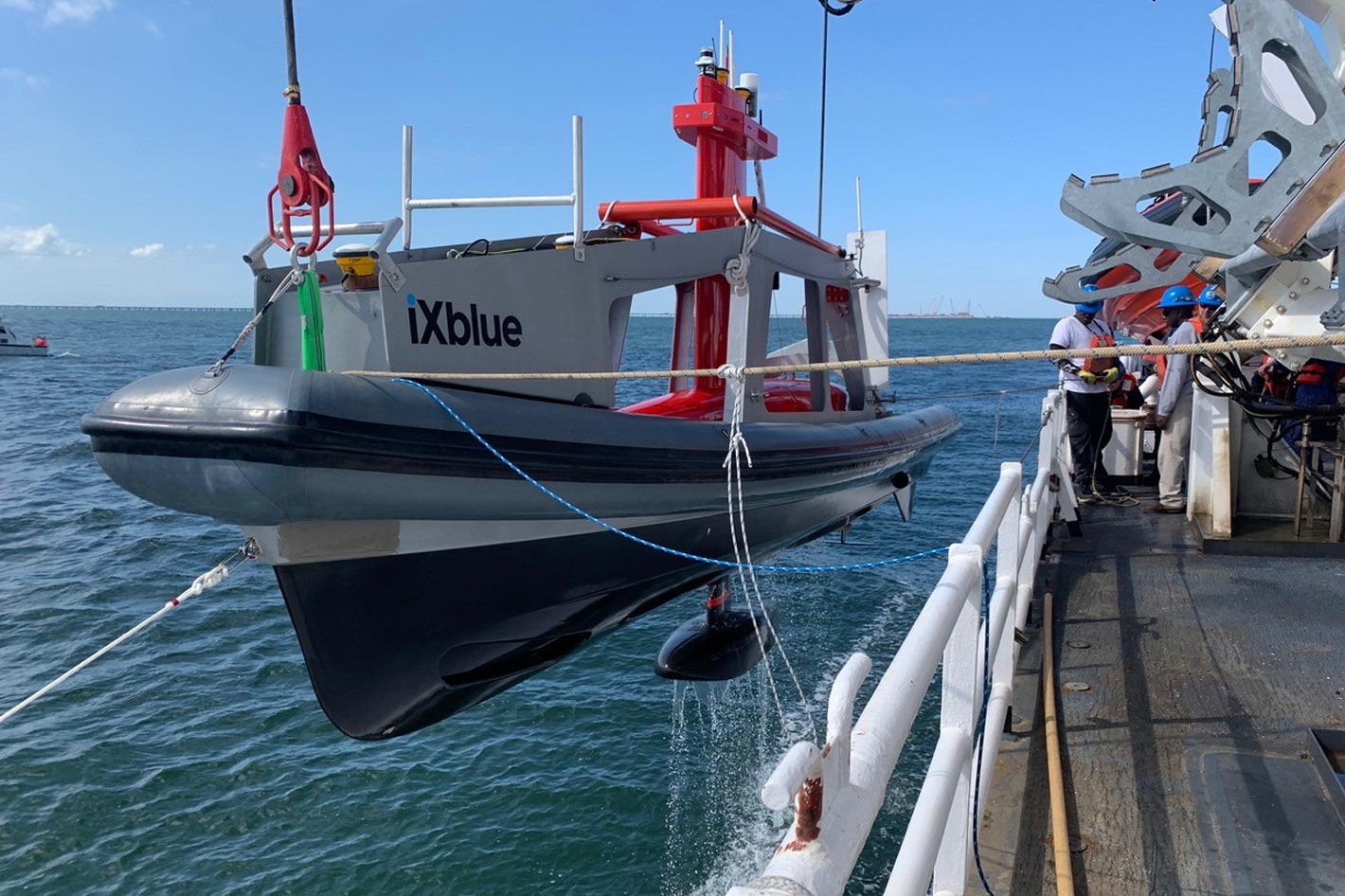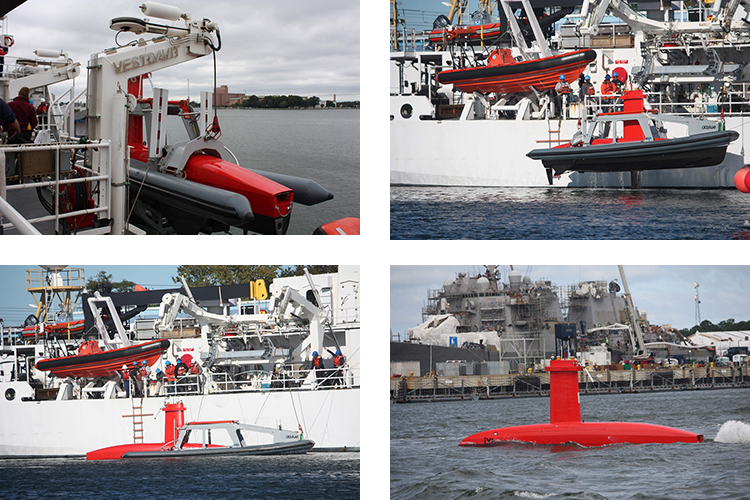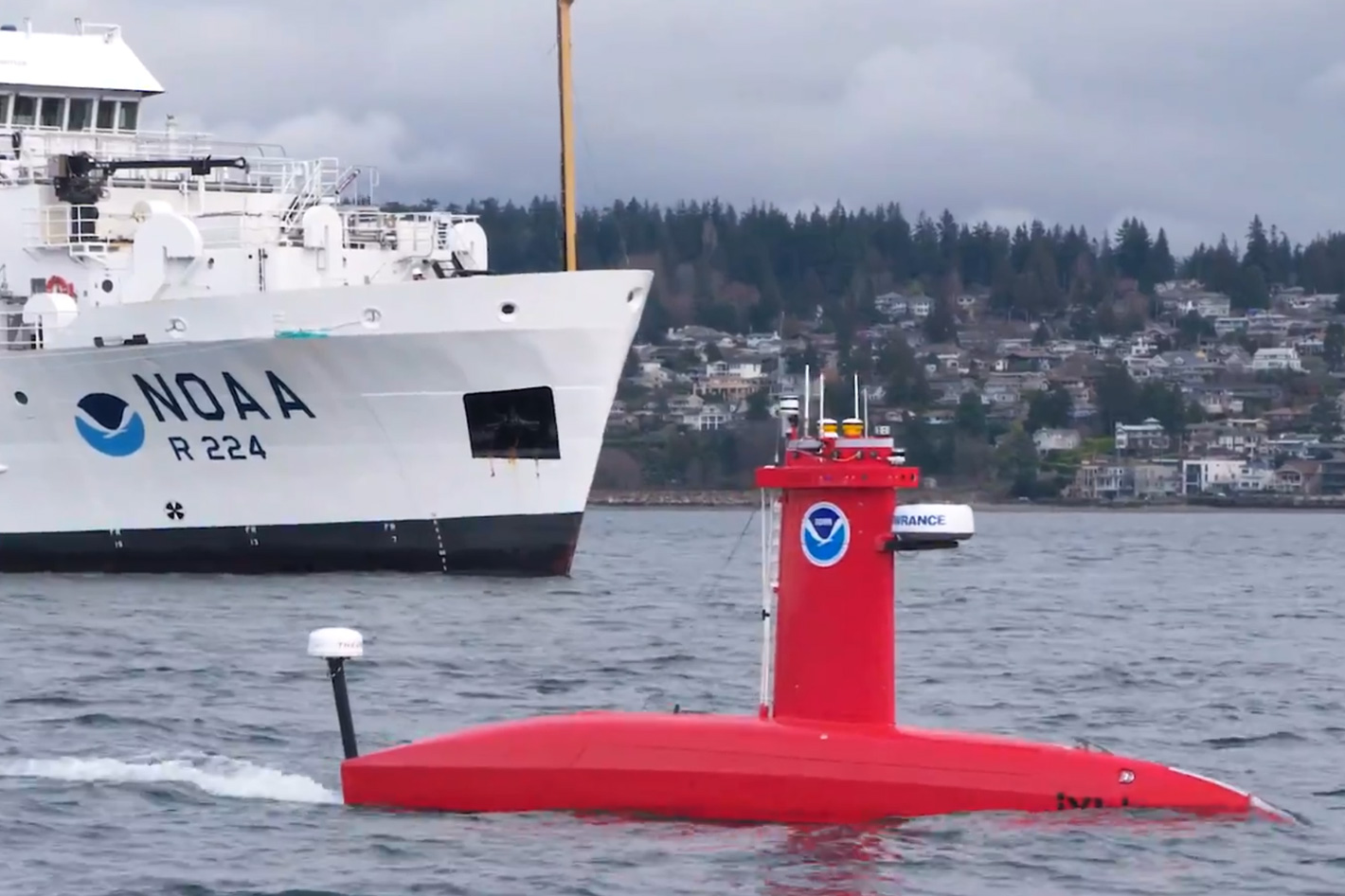The National Oceanic and Atmospheric Administration NOAA is already using USVs (Uncrewed Surface Vehicles) to track storms in the Atlantic Ocean. Next summer NOAA Fisheries will use DriX USVs in sea trials during summer pollock survey in Alaska.
NOAA Fisheries announced recently that initial testing of the seagoing drone DriX was a success and that there are now plans to use the uncrewed surface vehicles to complement NOAA vessels for more efficient fisheries surveys. According to the National Marine Fisheries Service, planning is underway for sea trials during summer pollock survey in Alaska.
As National Fisherman noted in August 2022, during the summer of 2021 Saildrone and NOAA sent five uncrewed surface vehicles (USVs) “storm chasing” from the coast of Jacksonville, Fla., and the U.S. Virgin Islands to survey the Atlantic Ocean and Caribbean Sea, to improve hurricane forecasting.
The results confirmed that the use of USVs helps to have a better understanding of hurricanes, and that’s the reason why the organization has chosen the Saildrone as part of an array of marine and air uncrewed tools used to improve forecast models.
In fact, the use of Saildrone’s USVs is being extended to other areas, as Navy Secretary Carlos Del Toro said, in an interview with DefenseScoop, that “contractor-owned drones could help the sea service overcome acquisition challenges and keep pace with technological change.” In fact, according to DefenseScoop, “The Navy’s 5th Fleet has been experimenting with this concept for Task Force 59, which is using unmanned surface vessels equipped with cameras to perform intelligence, surveillance and reconnaissance missions in the waters near the Middle East.”

NOAA has used the DriX USV before
Now NOAA Fisheries is evaluating the use of another USV, developed by iXblue. With over 15,000 hours in operations around the world over the past three years, the DriX USV is able to conduct both remote-controlled and supervised autonomous operations (within visual range or over-the-horizon). A versatile and efficient USV that can host a wide range of payloads and that offers optimum conditions for high quality data acquisition in both shallow and deep waters, the DriX used for NOAA tests was modified to be deployed and recovered from the NOAA ship Oscar Dyson.
Scientists and crew installed the USV’s communication and control systems and during a 3-day cruise in Puget Sound off the coast of Washington, they focused on practicing deploying and recovering the drone and collecting acoustic data. Given the initial success, NOAA Fisheries has decided to further evaluate DriX during a walleye pollock survey planned for this summer.
Although the use of the DriX by NOAA Fisheries is news, NOAA has used the USV before. In fact, already in 2019, a DriX USV was used in tandem with NOAA hydrographic survey vessel Thomas Jefferson for a series of sea trials. Those tests, designed to demonstrate hydrographic survey force-multiplier capability in offshore waters, were successfully conducted thanks to the ship’s crew, DriX and its unique Deployment System (DDS).
The project had started earlier, as far back as 2017, after the launch of DriX in December that year. Guillaume Eudeline, Global Business Developer for the Shipyard division at iXblue met with NOAA’s Office of Coast Survey Director, Rear Admiral Shepard M. Smith, who wanted to advance NOAA’s Office of Coast Survey initiatives by modernizing digital charting, and by increasing the use of autonomous systems for hydrography and was truly impressed with DriX capabilities. Guillaume Eudeline said “we worked through an industrial partnership with the University of New Hampshire in order to test DriX and assess how NOAA and the U.S. hydrographic community could benefit from our USV.”

The big test happens next Summer
One DriX was subsequently sent to New Hampshire in October 2018 and stayed with UNH for over a year. The university’s team of surveyors ran a series of tests to assess how DriX could be operated in the field, and if it could be used to conduct continuous survey operations in unchartered waters to increase surveying efficiency.
The tests being a success, NOAA decided, in October 2019, to integrate DriX into its daily hydrographic survey operations in a field trial. At the time Guillaume Eudeline said “It was also a great opportunity for iXblue to work with an iconic administration, and benefit from their first-rate feedback, opening possibilities for improvements. We now look forward to the next steps in our collaboration, with further sea trials in 2020.”
Apparently, the partnership continues, as NOAA Fisheries continues to evaluate the use of cutting-edge technologies that have the potential to improve our understanding of the oceans. The use of the DriX USV has the potential to improve acoustic-trawl surveys of walleye pollock, the largest U.S. fishery. NOAA Fisheries says that “the goal is to explore the use of uncrewed surface vehicles (USVs) to work in tandem with NOAA ships to improve the efficiency of collecting acoustic and biological data to estimate pollock abundance.”
The project to use DriX USV is the result of cooperation between the Alaska Fisheries Science Center survey team, NOAA Office of Marine and Aviation Operations, Exail, and the University of New Hampshire. Initial ship integration tests started in January demonstrated that a DriX USV could be an effective tool for supporting ship-based surveys.
“We hope to determine if the USV can be routinely deployed, recovered, and refueled from the ship quickly enough so that it can make some of the acoustic measurements while keeping up with the survey ship. If it can, then the ship will be able to collect biological samples with a trawl at the locations where fish aggregations are detected by either the ship or the USV,” said Alex De Robertis, a fisheries biologist at the Alaska Fisheries Science Center.
The big test for the viability of the project will come this summer, when the DriX USV is deployed in Alaska for the pollock survey in August.







